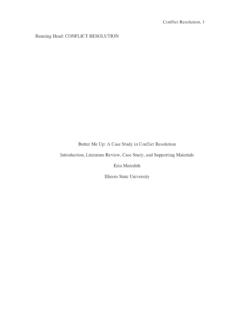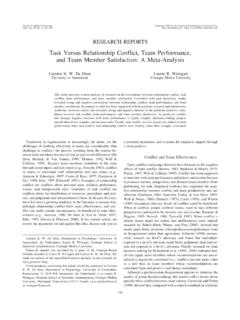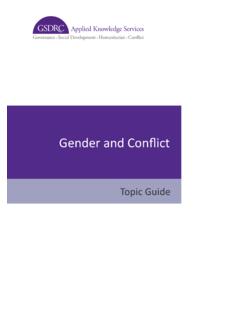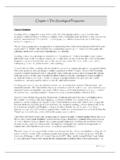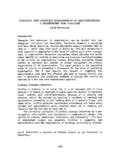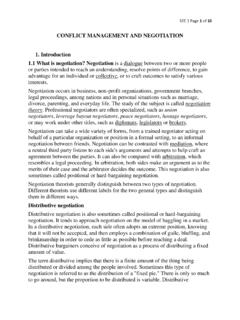Transcription of Conflict Analysis of 2007 Post-election Violence in Kenya
1 Conflict Analysis of the 2007 . Post-election Violence in Kenya Mara J. Roberts *. September, 2009. Abstract Kenya has been riddled with Conflict and Violence throughout its brief history as a nation. The 2007 Post-election Violence in Kenya , however, was of a different magnitude. In this paper, I perform an Analysis of the Conflict to examine why widespread Violence erupted in the wake of Kibaki's presidential reelection. I look at the history of the Conflict , examine stakeholders, and employ a variety of Conflict Analysis tools in an attempt to get to the root of the cause of the Conflict . Key Words: Kenya Post-election Violence , land dispute, tribal Conflict , * Director of Conflict Recovery, New Dominion Philanthropy Metrics 1.
2 I don't know whether Kibaki won the election . -Sam Kivuitu, Kenya election Committee Chair, Jan 2, 2008. 1. Introduction The carnage was horrific: 1,500 dead, 3,000 innocent women raped, and 300,000. people left internally displaced. Most of these atrocities happened in the first 14 days after the 2007 Kenyan general election . The severity of this Conflict unfolded in a span of 59 days between election Day, December 27th, 2007 to February 28th, 2008, when a political compromise was reached. The magnitude of the trauma and structural Violence that took place in Kenya after the fourth multi-party general election took both Kenyans and the international community, alike, by surprise (Maupeu, 2008).
3 In retrospect, the Violence that occurred could not only have been predicted, it could most likely have been prevented. One of the foundations of this Conflict Analysis is that what took place during the Kenyan 2007 elections had its roots in a weak national constitution. This constitution has progressively lacked a healthy checks and balances system between the executive, legislative and judicial branches of government. Over the span of three decades, amendments to the constitution were made to systematically erode these balances in favor of strengthening presidential powers. The result of these broad powers effectively made the presidential office equivalent to a dictatorship, which gave the president the ability to use and abuse this power without restraint.
4 The quote at the top of the page is pregnant with irony and is an example of what can occur as a result of a strong yet corrupt executive branch. Mr. Kivuitu was the chairman of the Electoral Commission of Kenya (ECK), the governmental organization that certifies 2. the election results. The irony is that in 2007 he certified that Kibaki won the election apparently without actually knowing whether or not he had won. Why would he do this? As a testimony to the imbalance of power in the executive branch, the leading ECK staff, including the chairmen, are appointed by the president. Therefore, one possible explanation is that he feared losing his job.
5 But how did the presidential office in Kenya become so powerful? History of the Conflict The country of Kenya was ruled by the iron hands of two men in succession from 1963 to 2002: Jomo Kenyatta (1963-1978) and Daniel Moi (1978-2002). In 2002, there was a change: the ruling political party, the Kenya African National Union (KANU), that had ruled the country since independence, collapsed. It collapsed beneath a new political party comprised of an alliance that had formed between all of the major Kenyan tribes. This political stakeholder was named the National Rainbow Coalition (NARC). The election victory was a landslide. Mwai Kibaki of the NARC won 62% of the vote on a platform of fighting corruption, forming a coalition government that shared power amongst the various tribes, and changing the constitution within 100 days of being elected to limit the executive power that had ballooned over the previous four decades(Mutua, 2008; Calas, 2008).
6 People across Kenya from all tribes felt hope that the country's government was finally on the verge of a system of governance that would have accountability through shared power. Yet, within weeks of the election , the memorandum of understanding (MOU) that forged the tribal factions into the NARC alliance and that got Kibaki elected had effectively collapsed (Mutua, 2008: 285). The agreement in the MOU to share power within the cabinet did not occur, as four key positions that were to be created, including that of a Prime 3. Minister position, did not materialize forward (Mutua, 2008: 284). Kibaki, from the Kikuyu tribe, broke his election promise and filled many appointed positions with fellow tribesmen, thus following in the footsteps of his presidential predecessors by selecting people for appointed positions primarily through tribal bias (Mutua, 2008: 285).
7 This in turn led to discrimination of many people of other tribes who were more qualified. Whether the decision to keep the massive executive power that Kibaki had campaigned to reform was premeditated, or whether he succumbed to certain pressures by his fellow tribesmen to hoard power within the tribe once in office may never be known. The result was the same: the disintegration of the NARC party and the broken promises of a shared government and new constitution. This left many citizens tasting what could have been and frustrated over what should have resulted from the new government coming to power in 2002. This frustration fueled the Violence that took place after the election in 2007 .
8 2. Worldview Analysis a. What are the life experiences that have shaped how this person understands Conflict ? The life experience that has shaped the typical Kenyan citizen's understanding of Conflict is similar to those in post -colonial nations that have succumbed to dictatorship. In the Kenyan context, this translates into the average citizen believing that the executive branch always wins, and that those in power will do whatever it takes to stay in power. This was seen with Kenyatta (a Kikuyu who was Kenya 's first president) who utilized his position to consolidate power by encouraging KANU members of parliament (MPs) to make significant ratifications to the constitution between 1964 and 1969, thus effectively create a dictatorship.
9 4. Upon Kenyatta's death in 1978, Moi (from the Kalenjin tribe) assumed the presidency through his constitutional right as Vice President, and was able to take advantage of the vast infrastructure of executive power Kenyatta had created. This was especially seen by Moi's ability to abolish the multiparty system through an amendment to the constitution in 1982, effectively making him head of both the executive branch and Parliament. (Mutua, 2008: 66). Even when the multiparty system reemerged in 1991, Moi was able to use his position to limit the opposition through intimidation as well as create votes through voting fraud in the elections of 1992 and 1997.
10 For example in the 1992 election , it is estimated that around 1 million youth were not allowed to register to vote because they were denied the national identity cards needed to register (Mutua, 2008). This is an example of structural Violence . The Kenyan citizen's life experience of understanding Conflict through the dominance of the executive and political elite is illustrated by the fact that the constitution was amended 28 times from 1963 to 1992, each time limiting the freedom of its citizens and expanding the power of the executive and political elite. In contrast, the US Constitution, which from 1788 to 1992 was amended 27 times, with arguably 18 of the 27 protecting or expanding freedom of its citizens.
